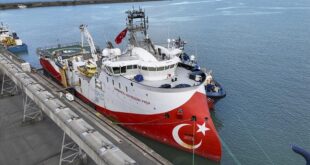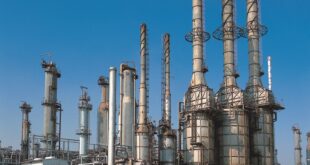Russia’s Gazprom is considering, with Chinese partners, increasing the capacity of its Power of Siberia gas pipeline to 44 Bcm/year from the current design capacity of 38 Bcm/year, CEO Alexei Miller said June 26.
In an entry to his online column following Gazprom’s annual general meeting, Miller also said there was the potential for Russian pipeline gas export capacity to China to reach more than 130 Bcm/year in the future with the addition of other routes.
Gazprom began its first gas exports by pipeline to China in December with the launch of the Power of Siberia pipeline. Flows have started at around 10 million cu m/d (3.65 Bcm/year) and are set to ramp up to capacity gradually in the coming years.
Gazprom has also begun design work on a second gas pipeline to link to the growing Chinese market, a 50 Bcm/year artery that will carry Russian gas via Mongolia to some of China’s biggest demand centers, dubbed Power of Siberia-2.
“China’s gas demand will grow rapidly and could double in the next 15 years,” Miller said in his column.
He said Chinese gas consumption in 2019 rose almost 10% to more than 300 Bcm.
Miller said the growth in supplies through Power of Siberia would outstrip both LNG imports and the supply of Central Asian gas to China.
“On the negotiating table with our Chinese partners is an increase in gas supply through the Power of Siberia pipeline by 6 Bcm/year to 44 Bcm/year,” Miller said.
As well as the plans for the Power of Siberia-2 pipeline, Gazprom is also considering supplying China with gas from its Far East.
“Altogether, this makes it possible to talk about the export of pipeline gas to China in the foreseeable future in the amount of over 130 Bcm/year,” Miller said.
European market
Miller also said the European gas market was in a difficult period, with all market players affected.
“Today the [European] gas market is not going through the easiest period,” he said. “Difficulties are experienced by all of its participants.”
But, Miller said, Gazprom has a number of “significant” advantages including a rich resource base, a balanced trading portfolio, flexible terms of supply, and modern trading tools. “We continue to reliably supply gas to our consumers. We remain the largest exporter [to Europe].”
Russian gas exports to Europe by pipeline are down about 25% this year, according to S&P Global Platts estimates.
Gazprom itself has said it expected sales in the Far Abroad (Europe plus China and Turkey, but minus the countries of the former Soviet Union) to be around 166.6 Bcm in 2020, down from 199.3 Bcm last year.
Yamal development
Miller also pointed to progress at Gazprom’s new gas production center on the Yamal Peninsula in northern Russia, which is key to Gazprom’s plan to continue to replenish its resource base.
On June 12, Gazprom began drilling the first production well at the giant Kharasavey gas field on the Yamal Peninsula as the company continues to shift its production base northward.
Kharasavey — estimated to hold 2 trillion cu m of gas — is set to produce first gas in 2023 with plateau output of 32 Bcm/year.
Gazprom considers the Yamal peninsula — home to its 4.9 Tcm supergiant Bovanenkovo field — as a strategic region for maintaining gas output in Russia as its traditional production center in West Siberia continues to be depleted.
It is also closer to what Gazprom hopes will become its main 110 Bcm/year export corridor to Europe — the existing 55 Bcm/year Nord Stream and the planned 55 Bcm/year Nord Stream 2 pipeline routes to Germany.
Bovanenkovo — which started production in 2012 — has a capacity of 115 Bcm/year, though its annual capacity could be ramped up to 140 Bcm through the development of deeper deposits at the field.
Kharasavey — north of Bovanenkovo and mainly onshore but also partly in the waters of the Kara Sea — could also be expanded through the exploitation of deeper deposits.
Bovanenkovo and Kharasavey were discovered in the 1960s but not initially thought economic to develop given their remote locations and the relative ease of developing gas fields in the Nadym-Pur-Taz area of West Siberia.
There continued to be doubts more recently as to whether Gazprom would move forward with developing Kharasavey at all given an uncertain outlook for European gas demand.
Tags Allexey Miller Gazprom Platts Russia
Check Also
Slump in Coal Production Drags down Poland’s Economic Recovery
A 26% plunge in coal mining weighed on Poland’s industrial output in March 2024, casting …
 Iran Energy News Oil, Gas, Petrochemical and Energy Field Specialized Channel
Iran Energy News Oil, Gas, Petrochemical and Energy Field Specialized Channel



